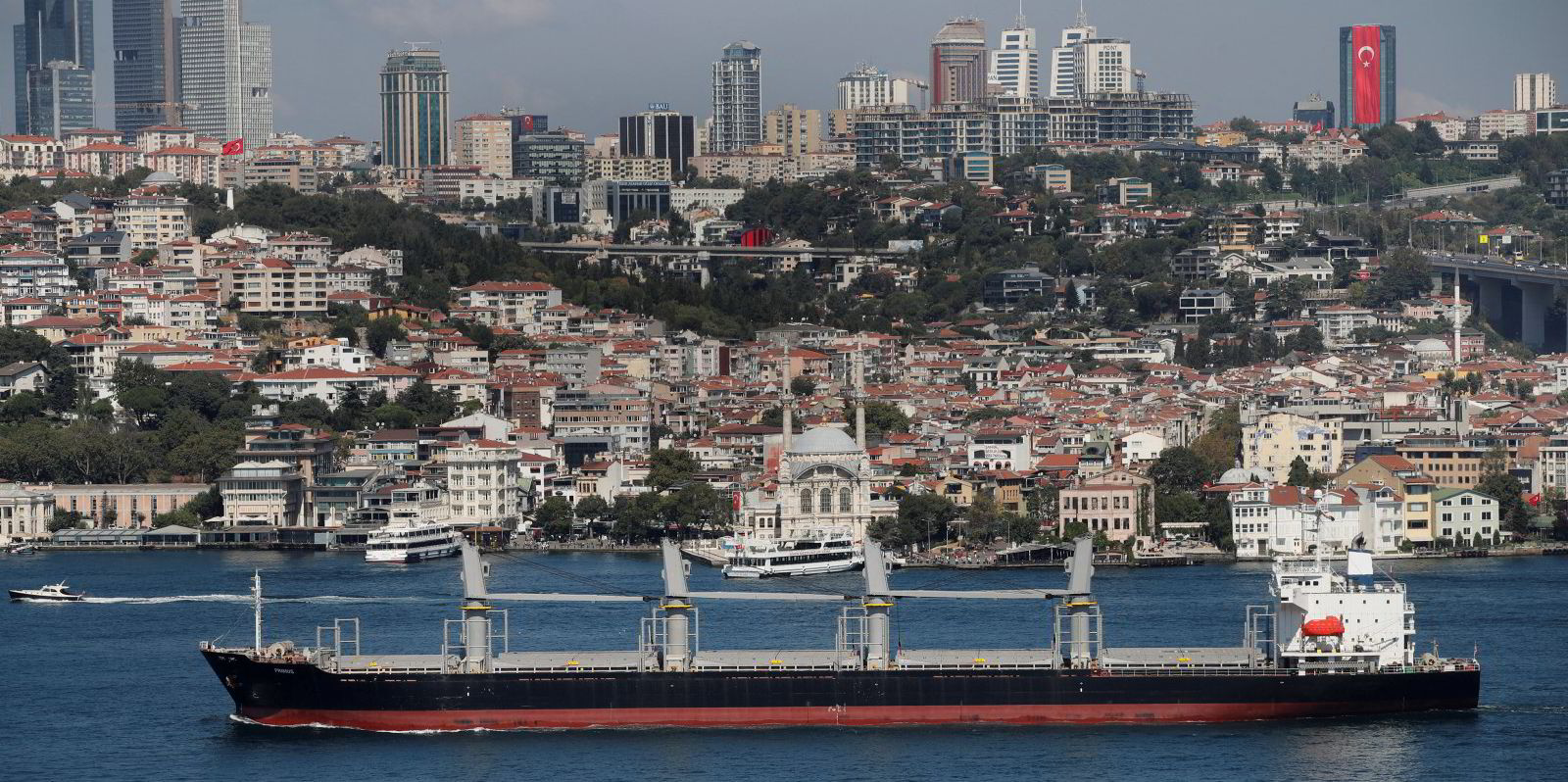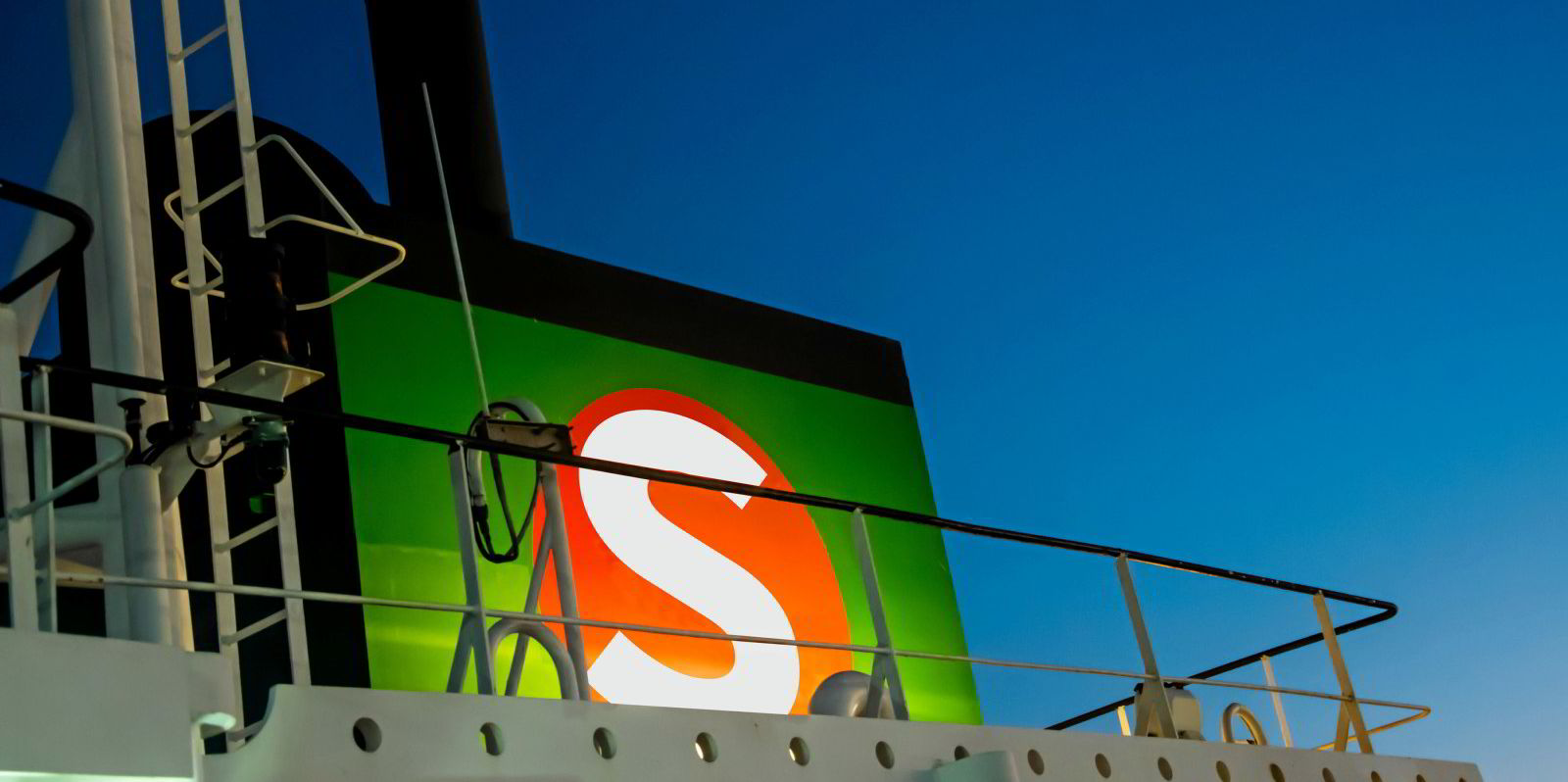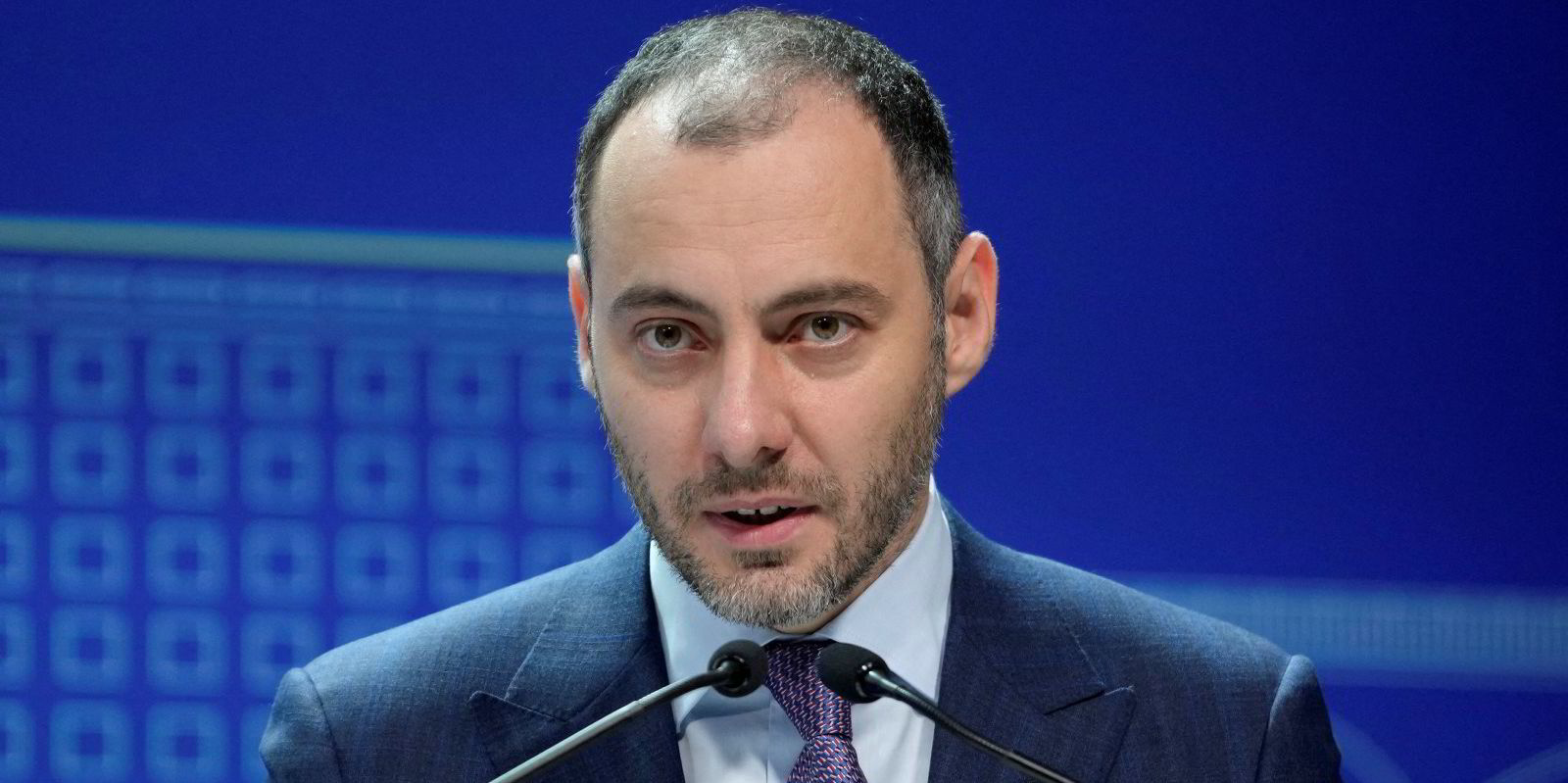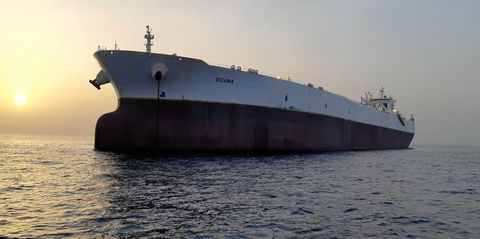Ukraine has managed to send a second ship through a temporary maritime corridor set up to help trapped vessels get out of the war-torn country.
A senior Ukrainian official identified the ship as the 32,600-dwt Primus (built 2006).
The Liberian-flag handysize had been immobilised in Odesa since Russia’s invasion in February 2022.
It left the city on 26 August and is currently heading southwards in international waters in the Black Sea towards Dakar, Senegal.
Vessel trackers show the Primus underway as laden. The nature of its cargo, however, is not entirely clear.
The Signal Ocean data platform suggests the ship is carrying 25,000 tonnes of corn. Ukrainian infrastructure minister Oleksandr Kubrakov, however, tweeted that while in Odesa it was carrying “steel products for African countries”.
Ukraine earlier this month declared that it had opened a humanitarian corridor for ships stranded in its Black Sea ports.
The Primus becomes the second vessel using it since ship traffic out of Ukraine’s main ports on the north shore of the Black Sea came to a complete halt last month, when Russia pulled the plug on a United Nations-protected safe corridor.
In response, the government in Kyiv unilaterally set up an alternative route closer to Ukraine’s shore and then through Romanian-controlled waters.
The first and most valuable of the trapped vessels to get out under the new scheme earlier this month was the 9,400-teu container ship Joseph Schulte (built 2014) — a vessel registered under the ownership of a Bernhard Schulte Shipmanagement unit in Singapore.
The Primus seems to be controlled by German interests based in Singapore as well.
When the Primus was stuck in Odesa last year, it was known as the Polarstar under the management of Greece’s Seastar Chartering.
While in captivity, however, the Polarstar changed hands — probably sometime in June this year.
According to S&P Global’s database, it switched management in July to Blumenthal Asia — a Singapore-based unit of German shipping company Blumenthal JMK.
No reliable way yet to get in and out
The extraction of the Primus is a success for Ukraine, which announced its temporary corridor late in July and formalised it on 25 August with an official letter to the International Maritime Organization.
Russia had said that following its exit from the UN-led Black Sea Grain Initiative it considered all kinds of commercial shipping in Ukraine as a potential military target.
Moscow has followed up on its menacing words by carrying out drone and missile attacks on Odesa. At the same time, Moscow has been disrupting vessel traffic in Ukraine’s Danube area further to the south through drone strikes on ports and enforced inspections of inbound vessels.
The importance of the two ships leaving Odesa, however, should not be exaggerated as it does not signal yet any meaningful resumption of regular ship traffic to and from Ukraine’s big grain ports in replacement of the grain deal.
There were about 60 ships trapped in Ukraine, when war broke out last year. Some benefited from the UN initiative to get out.
Of the remaining ships, however, just two bulk carriers are now in Odesa — the 35,000-dwt Puma (built 2017) and 10,100-dwt Comet (built 1997).
Most other stranded ships are stuck further west in Mykolaiv and Kherson. This means they would have to sail past Russian-controlled waters in occupied territory to escape, which is regarded as too dangerous.
As for fresh, inbound traffic to Ukraine’s main ports coming in from other parts of the world, it is unlikely to emerge as long as Kyiv and its allies do not provide security and insurance arrangements equivalent to those of the grain deal.
As TradeWinds reported, insurance broker Marsh is working with the London marine insurance community to come up with a scheme to insure ships under a new plan to export grain from Odesa.






